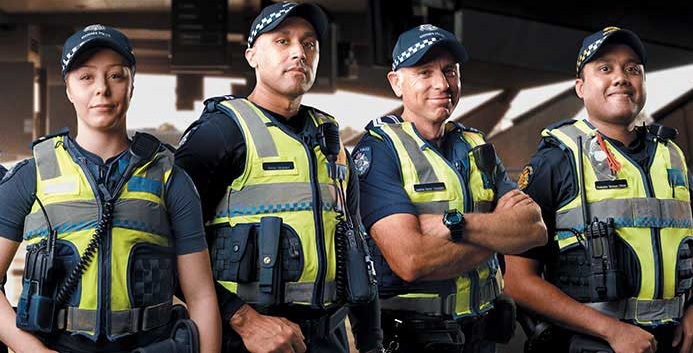
The future is certain to present challenges not yet envisaged by police and law enforcement agencies. The fourth industrial revolution is affecting all aspects of society, and is forecast to so radically alter the policing landscape that any solution developed today is likely to be outpaced by changes in the operating environment. Resolving future critical incidents will require the capability to develop innovative solutions in real time, in a dynamic environment. Fixed mindsets and a reliance on old operating models will prove ineffective in the face of increasingly complex threats, particularly those leveraging emergent AI capabilities.
The community will expect the police to remain accessible and digitally enabled by the same instantaneous and on-demand data that people use in their personal lives. If police continue to depend on traditional operating paradigms and technology, their capabilities, and indeed even their relevance, will be challenged, as they are outpaced by a faster, more networked society. In this circumstance, it would be easy to jump to technology solutions to keep pace with society; however, the temptation to seek immediate demonstrable solutions by acquiring new physical assets or technology must be resisted as a stand-alone solution. Instead, technology must be layered with equal investment in the human workforce and both must be aligned to future capability.
At its core, policing is about human interaction, and future capability depends on the people who comprise the operational workforce. It is the women and men working in general, investigative or specialist areas, and the professional staff who support them, who will ultimately determine success. Police agencies should therefore consider culture and cognitive diversity as two key elements that will be pivotal to future capability and invest accordingly. If these elements aren’t firmly embedded in their organisational DNA, police agencies won’t be able to generate the level of innovation required to meet future challenges, regardless of any help from technology.
Daniel Coyle, a New York Times bestselling author, describes culture as the relationships that exist between those sharing a common goal. To meet new challenges, police agencies must develop a culture that supports a cognitively diverse workforce. Such a culture would allow members to challenge prevailing norms in a safe environment where divergent views are encouraged. This could foster the development of innovative solutions to challenges that remain unresolved by traditional approaches. The collaborative relationships formed will harness individual expertise and capabilities, synthesising them into a new entity in which adaptation and agility are prized. The resultant culture will foster a dynamic approach, where team composition becomes fluid, capable of adapting and morphing by combining capabilities as needed.
Cognitive diversity refers to the differing ways in which people think about and analyse information based on their worldviews and experiences. Groups that are made up mainly of people from a single gender and background, who look, act and think alike and have had the same sorts of experiences, will generally develop similar approaches to resolving a complex problem. Often referred to as closed loops or echo chambers, these groups are less capable of generating the level of innovation needed to solve complex challenges. To prepare for the next level of complexity that emergent and future challenges will present, police agencies need to embed cognitive diversity at senior decision-making levels. Agencies that fail to embrace cognitive diversity will be unable to innovate at the scale and pace required, and will continue to rely on suboptimal historical practices.
Cognitive diversity also encompasses gender and identity diversity, and while progress has been made at entry-level recruitment, police agencies need to take a longer term view. That must include real investment in the careers of members from groups which are generally underrepresented in policing, yet overrepresented in their interactions with police. Such investment should include career educational pathways in preparation for senior ranks. It is at the senior level, where long-term, high-impact decisions are made, that their voices would provide divergent views and perspectives. For such an approach to be successful, underrepresented groups need senior-level role models they can emulate.
The development of cognitive diversity currently focuses on the entry point into policing and will take time to mature. Generating cognitive diversity at senior levels in the short term could be done by adopting a model comparable to the US Army War College, which would enable senior police to undertake a year of immersive study focusing on critical thinking and solving complex problems. They could then use those skills to challenge prevailing beliefs about policing, while simultaneously developing innovative approaches to tackling existing and emergent challenges.

